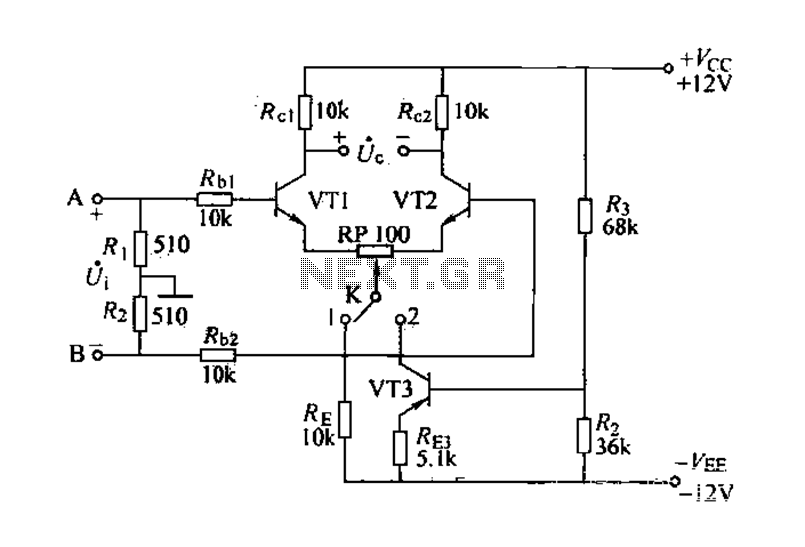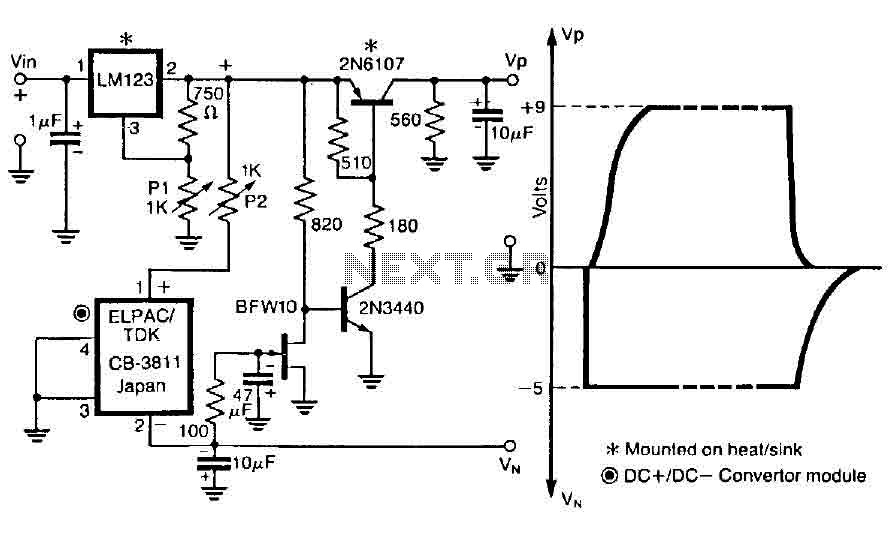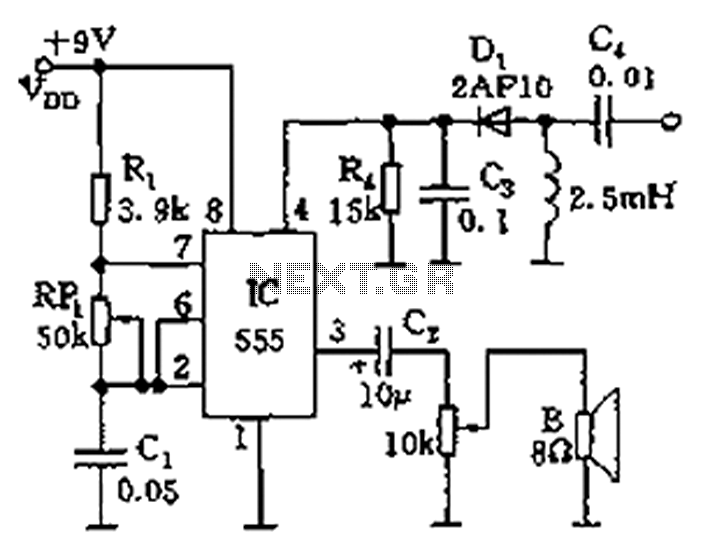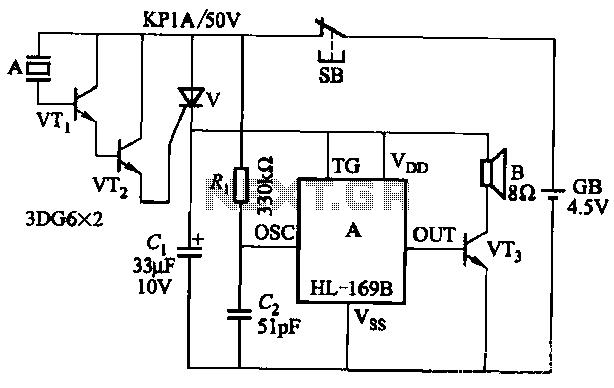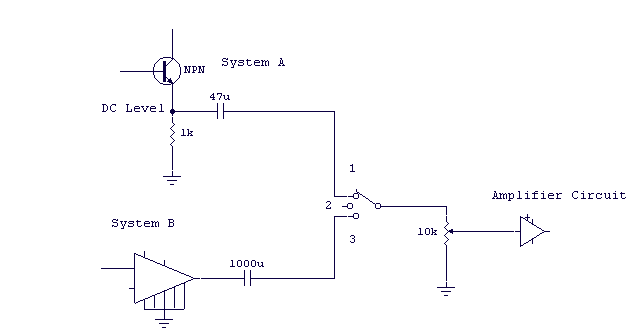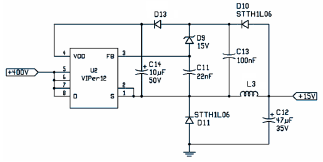
Voltage-Controlled Tone/Volume/Balance Circuit
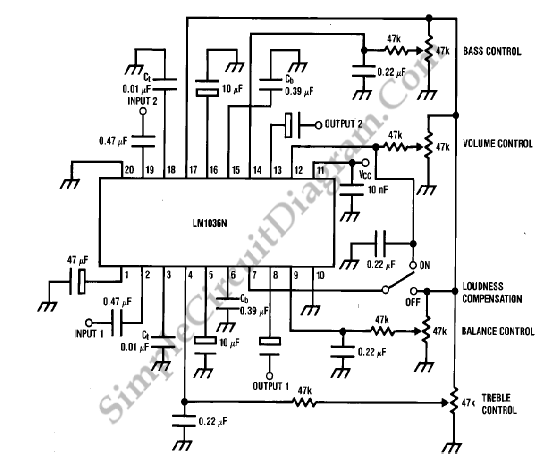
The LM1036 is a DC-controlled circuit designed for tone adjustment (bass/treble), volume control, and balance. It is suitable for use in car radios, televisions, and audio systems. The circuit also incorporates loudness compensation.
The LM1036 integrates several functionalities essential for audio signal processing. It operates as a tone control circuit, allowing users to adjust bass and treble levels independently through DC voltage control. This feature is particularly beneficial in environments where audio quality can be affected by external factors, such as in vehicles or home theaters.
The volume control aspect of the LM1036 is implemented using a variable resistor configuration, which can be adjusted to provide a wide range of sound levels. This ensures that users can achieve the desired loudness without distortion, preserving audio fidelity.
Balance control is another critical feature of the LM1036, enabling users to adjust the audio output between left and right channels. This is particularly useful in multi-speaker setups, ensuring an even sound distribution across the listening area.
Additionally, the LM1036 includes loudness compensation, which enhances low-level listening by boosting bass frequencies. This compensation is vital for maintaining a balanced sound profile at lower volumes, making it suitable for late-night listening or quiet environments.
The LM1036 can be easily integrated into various audio systems, thanks to its compatibility with standard audio components. Its design allows for straightforward implementation in both analog and digital audio circuits, making it a versatile choice for engineers designing modern audio applications.The LM1036 is a DC controlled tone (bass/treble), volume and balance circuit which can be applied in car radio, TV and audio systems. Loudness compensation to.. 🔗 External reference
The LM1036 integrates several functionalities essential for audio signal processing. It operates as a tone control circuit, allowing users to adjust bass and treble levels independently through DC voltage control. This feature is particularly beneficial in environments where audio quality can be affected by external factors, such as in vehicles or home theaters.
The volume control aspect of the LM1036 is implemented using a variable resistor configuration, which can be adjusted to provide a wide range of sound levels. This ensures that users can achieve the desired loudness without distortion, preserving audio fidelity.
Balance control is another critical feature of the LM1036, enabling users to adjust the audio output between left and right channels. This is particularly useful in multi-speaker setups, ensuring an even sound distribution across the listening area.
Additionally, the LM1036 includes loudness compensation, which enhances low-level listening by boosting bass frequencies. This compensation is vital for maintaining a balanced sound profile at lower volumes, making it suitable for late-night listening or quiet environments.
The LM1036 can be easily integrated into various audio systems, thanks to its compatibility with standard audio components. Its design allows for straightforward implementation in both analog and digital audio circuits, making it a versatile choice for engineers designing modern audio applications.The LM1036 is a DC controlled tone (bass/treble), volume and balance circuit which can be applied in car radio, TV and audio systems. Loudness compensation to.. 🔗 External reference
